How to Use Technology to Track Medication Expiration Dates

Every year, thousands of people accidentally take expired medication. It might be an old bottle of antibiotics in the bathroom cabinet, a forgotten inhaler in the car, or a painkiller left over from last winter’s flu. These aren’t just harmless leftovers-they can be ineffective, unsafe, or even dangerous. The problem isn’t just about forgetting. It’s about systems that rely on handwritten labels, memory, and guesswork. Thankfully, technology is changing that. From hospital pharmacies to emergency ambulances, smart systems are now automatically tracking when medications expire-before a single pill is taken.
Why Manual Tracking Fails
Before we look at the tech solutions, it’s important to understand why old-school methods don’t work. Picture a nurse in a busy hospital ward checking 30 medication carts. Each cart has dozens of bottles, each with a printed expiration date. She has to read every label, cross-reference it with a paper log, and manually update a spreadsheet. One mistake-a misread date, a smudged ink, a rushed check-and an expired drug could end up in a patient’s IV bag. In smaller settings, like home care or EMS units, it’s even worse. Paramedics carry dozens of medications in their kits. Many still use sticky notes or color-coded tape to mark expiration dates. One study found that 38% of EMS agencies had at least one expired medication in their kit during a routine audit. That’s not negligence-it’s a flaw in the system. Manual tracking is slow, error-prone, and doesn’t scale. Technology fixes this by removing human guesswork from the equation.RFID: The Game-Changer in Hospital Pharmacies
The most powerful tool in modern medication tracking is RFID-Radio Frequency Identification. Unlike barcodes, which need to be scanned one at a time, RFID tags can be read from a distance, all at once. Hospitals like Texas Children’s and UF Health Shands now use RFID-tagged medications in their crash carts, operating rooms, and high-value drug storage units. Each pill bottle, vial, or syringe gets a tiny RFID chip attached. When a cart or cabinet is scanned, a reader picks up signals from every tagged item simultaneously. The system instantly knows what’s inside, how many are left, and-most importantly-when each item expires. If a medication is within two days of its expiration date, the system flags it automatically. No one has to remember. No one has to check. KitCheck is the most widely adopted RFID system in U.S. hospitals, used by over 900 facilities. It cuts inventory checks from hours to minutes. At Texas Children’s, pharmacists saved hundreds of hours annually just by eliminating manual counts of 784 high-value drugs-each costing more than $100. And the accuracy? Near 100%. Manual methods hover around 65-75%. The catch? RFID requires pre-tagging. Medications must be labeled before they enter the system. That means pharmacies need to work with suppliers to get pre-tagged stock. It’s an upfront cost-anywhere from $50,000 to $200,000 depending on facility size-but the savings from reduced waste and fewer errors pay for it quickly. One hospital reported saving $220,000 a year just by cutting expired medication disposal.eMAR: The Digital Nurse’s Assistant
For long-term care facilities, home health agencies, and IDD (Intellectual and Developmental Disabilities) programs, eMAR-Electronic Medication Administration Record-is the go-to solution. This isn’t just a digital version of a paper chart. It’s a full medication management system that links directly to pharmacy orders, patient records, and expiration databases. When a nurse administers a pill, they scan the patient’s wristband and the medication’s barcode. The system checks: Is this the right drug? The right dose? The right time? And-crucially-is it still good? If the expiration date has passed, the system blocks the action and alerts the nurse immediately. No override. No exceptions. eVero’s platform, used by dozens of agencies since 2020, integrates with pharmacy systems to auto-generate refill orders when stock runs low. It also logs who gave the medication, when, and under what conditions. That’s not just for safety-it’s for compliance. Regulators like the DEA and CMS require detailed records for controlled substances. eMAR delivers them automatically. Unlike RFID, eMAR doesn’t track physical inventory across shelves. It tracks administration. So it’s perfect for places where medications are given to patients daily, not stored in bulk. It’s less about warehouse efficiency and more about patient safety at the point of care.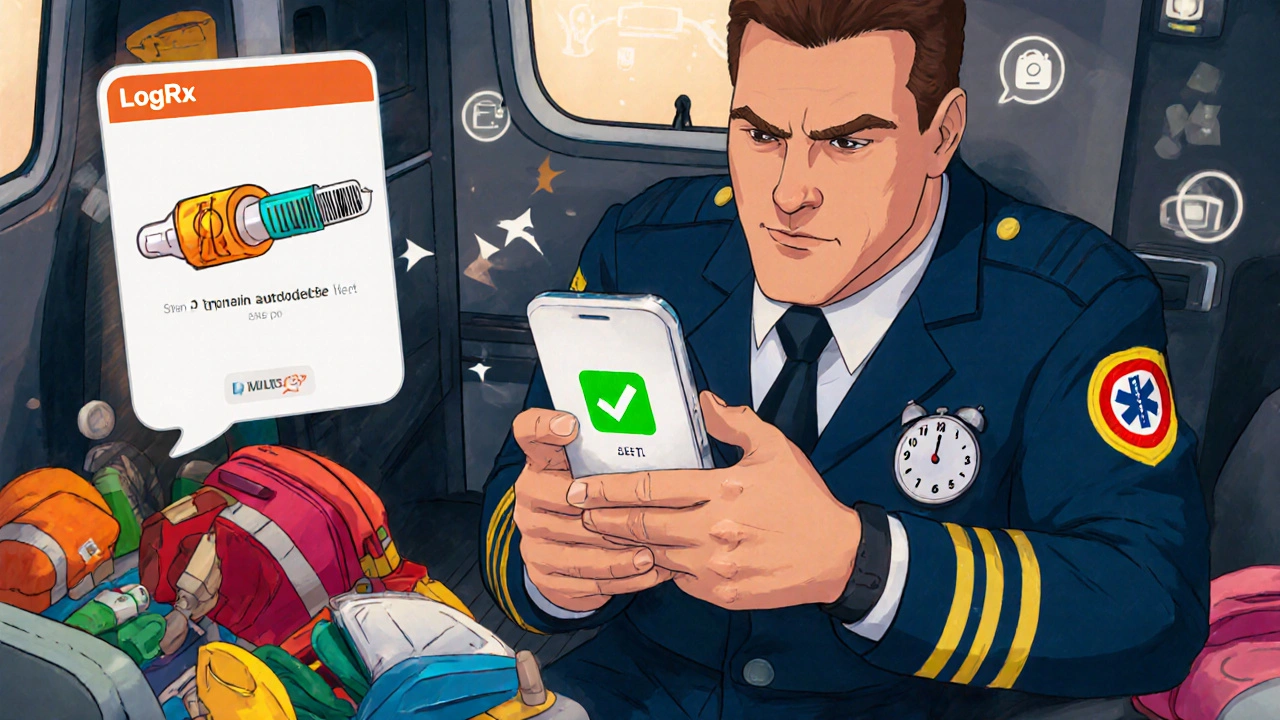
Automated Dispensing Cabinets (ADCs): The Smart Medicine Drawer
If you’ve ever seen a locked cabinet in a hospital hallway that dispenses pills with a badge swipe, you’ve seen an Automated Dispensing Cabinet. These aren’t new, but modern versions are smarter than ever. ADCs now automatically log every medication taken out-lot number, expiration date, who took it, and when. TouchPoint Medical’s systems, used by closed-door pharmacies, don’t just store drugs. They monitor temperature, track usage patterns, and alert staff when stock is low or nearing expiration. One hospital in Ohio reduced its expired medication waste by 18% in six months just by using ADCs with real-time expiration alerts. What makes ADCs powerful is their integration. They connect to the hospital’s pharmacy system, so when a nurse takes a medication, the inventory is updated instantly. No manual counts. No lag. No errors. They’re especially useful in high-turnover areas like emergency rooms and ICUs, where speed and accuracy are life-or-death.Mobile Apps for Smaller Teams: LogRx and Beyond
Not every organization can afford a full RFID or eMAR rollout. Emergency medical services, small clinics, and home care providers need something simpler-and cheaper. LogRx is a mobile app that runs on standard iOS and Android devices. No new hardware. No complex setup. Just scan a barcode on the medication, and the app records the expiration date. It sends reminders 30, 14, and 2 days before expiration. It also generates DEA-compliant logs for controlled substances. Portland Fire & Rescue started using LogRx in 2023. Their team reported a 70% drop in administrative time spent tracking medications. “It’s now easier to comply with DEA regulations,” one paramedic said. “And we’ve stopped handing out expired epinephrine.” DrugXafe takes a different approach. It uses Electronic Product Codes (EPCs) to track medications from manufacturer to patient. If a drug is expired, the system blocks it from being sold or dispensed-even if someone tries to override it. This is ideal for large distributors and retail pharmacies, but it needs industry-wide adoption to work fully.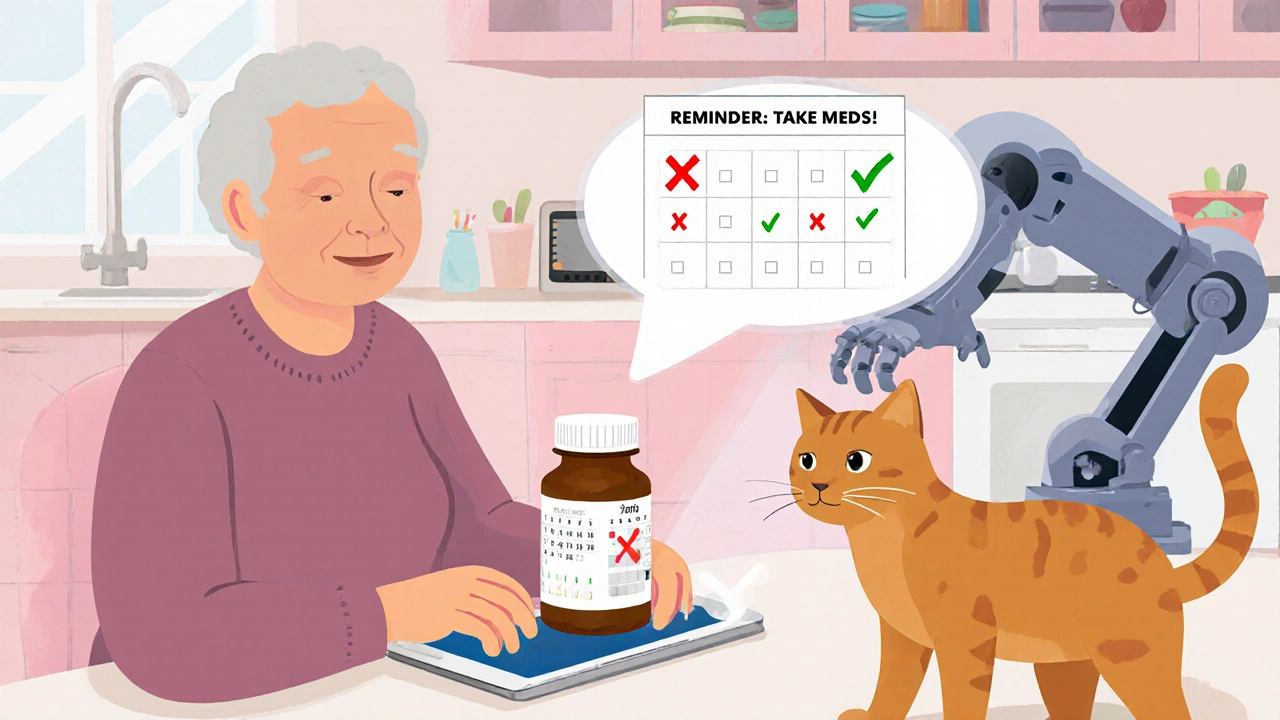
What You Need to Get Started
Choosing the right system depends on your setting:- Hospitals with large pharmacies: Go for RFID (KitCheck) or integrated ADCs. You need bulk tracking and real-time inventory control.
- Long-term care or IDD facilities: eMAR is your best bet. Focus on administration accuracy and regulatory reporting.
- EMS, clinics, or home care: Mobile apps like LogRx give you 80% of the benefit at 20% of the cost.
- Assessment (2-4 weeks): Figure out what you need and what you already have.
- Installation (1-3 weeks): Set up hardware or install software.
- Training (2-6 weeks): Staff need to learn new workflows. Resistance is common-62% of hospitals report pushback.
- Testing (2-4 weeks): Make sure everything talks to everything else.
What’s Coming Next
The future of medication tracking isn’t just about avoiding expired drugs-it’s about predicting them. Intelliguard Health is piloting AI that analyzes usage patterns to predict when a medication is likely to expire before it even gets to the shelf. If a drug sits unused for 45 days, the system flags it for redistribution or discounting-cutting waste before it happens. Blockchain is being tested to track drugs from factory to patient, ensuring no counterfeit or tampered products enter the supply chain. And manufacturers are starting to pre-tag medications before shipping, so hospitals don’t have to do it themselves. By 2027, Gartner predicts 45% of U.S. hospitals will use RFID-based tracking. That’s up from just 25% today. The trend is clear: if you’re still relying on handwritten labels, you’re not just behind-you’re at risk.Real Impact, Real Numbers
Don’t take it from me. Take it from the data:- Hospitals using RFID report 15-20% less expired medication waste.
- Inventory counting time drops by up to 75%.
- Compliance errors fall by over 80% in eMAR-using facilities.
- Emergency teams using LogRx cut administrative time by 70%.
- Annual savings per hospital: $120,000-$300,000.
Can I use my phone to track my own medications at home?
Yes. Apps like LogRx and Medisafe let you scan barcodes on your prescription bottles and set reminders for expiration dates. They’re not as powerful as hospital systems, but they’re accurate enough for personal use. Just make sure the app syncs with your pharmacy or lets you manually enter dates if the barcode isn’t scannable.
Are expired medications always dangerous?
Not always, but you can’t assume they’re safe. Some medications, like insulin or antibiotics, lose potency quickly after expiration and can fail to work when you need them most. Others, like aspirin or antihistamines, may degrade slowly. The FDA says most drugs remain safe past their expiration date-but they don’t guarantee effectiveness. If you’re treating something serious, don’t risk it.
How do RFID tags work on pills?
RFID tags aren’t on the pill itself-they’re on the bottle, blister pack, or carton. The tag is a tiny chip with a radio antenna, about the size of a grain of rice. It doesn’t need batteries. When scanned, it sends back stored data: lot number, expiration date, drug name. The system reads dozens at once, no line-of-sight needed.
Is this technology only for big hospitals?
No. While RFID systems are common in large hospitals, simpler tools like mobile apps (LogRx) and basic eMAR platforms are designed for small clinics, home care, and EMS. Many vendors offer tiered pricing or pay-as-you-go models. You don’t need a $200,000 system to start tracking expiration dates safely.
What if my pharmacy doesn’t use any of this tech?
Ask for it. Many pharmacies now offer digital expiration alerts via email or app. If they don’t, use a personal medication tracker app. Write expiration dates on the bottle with a permanent marker. And always check the date before taking anything-even if it’s "just a leftover." Your safety isn’t worth the risk of assuming.
16 Comments
Jenny Lee
Love this. Finally, someone’s talking about real solutions instead of just complaining.
Alexis Paredes Gallego
Of course they are. RFID chips? In medicine? Next they’ll be implanting microchips in your tongue so the government knows when you take aspirin. This isn’t safety-it’s surveillance with a stethoscope.
Brandon Lowi
Let’s be brutally honest: America’s healthcare system is a circus-except the clowns are wearing scrubs and the elephants are RFID-tagged vials. We’ve outsourced common sense to Silicon Valley startups and now we’re paying $200K for a scanner that tells us not to give someone expired insulin. The real tragedy? We’re proud of this.
Erica Lundy
The ethical dimension of this technological escalation is profound. We are not merely automating inventory-we are externalizing moral responsibility. The nurse who once held the weight of human error now defers to a system that absolves her of agency. Is this progress, or merely the quiet erosion of professional accountability under the guise of efficiency?
Kevin Jones
RFID? eMAR? ADCs? You’re speaking in corporate acronyms like it’s gospel. The real innovation is not the tech-it’s the fact that we’re finally admitting that humans suck at this job.
Premanka Goswami
Who owns the data from these RFID tags? Big Pharma? The DEA? The Pentagon? You think they’re doing this for patient safety? They’re building a biometric ledger. One day, your pill bottle will report your mood to an algorithm. Don’t be fooled.
Saket Sharma
LogRx? That’s a toy. Real systems don’t run on smartphones. If you’re trusting your life to an app with a barcode scanner, you deserve the expired epinephrine you’ll get.
Shravan Jain
18% waste reduction? That’s pathetic. If your hospital can’t do better than that, you’re not broken-you’re incompetent. And yes, I’m talking to you, Ohio.
Joshua Casella
Everyone’s focused on the tech, but the real win here is culture. When you stop treating expiration dates like a suggestion and start treating them like a law, everything else follows. This isn’t about gadgets-it’s about discipline. And discipline is something we can all learn.
Richard Couron
RFID in hospitals? That’s just the first step. Wait till they start tagging your blood. Next thing you know, your plasma is being sold to China while you’re sleeping. This isn’t healthcare-it’s a supply chain takeover. And the FDA? They’re in on it.
Alex Boozan
Mobile apps for EMS? You’re kidding, right? You’re giving paramedics a phone to scan pills while they’re driving 90 down the highway with a heart attack patient in the back? That’s not innovation-that’s a lawsuit waiting to happen.
mithun mohanta
Let me be clear: The entire premise is bourgeois. You are glorifying corporate surveillance under the banner of ‘safety.’ Meanwhile, the real issue-pharmaceutical monopolies, price gouging, and the commodification of human life-is ignored. RFID tags won’t fix capitalism.
Evan Brady
For anyone at home: Get Medisafe. It’s free, works offline, lets you add pills manually if the barcode’s faded, and sends you a push notification 48 hours before expiration. I’ve used it for three years. Never missed a dose. Never took an expired pill. Simple. No RFID. No drama.
Ram tech
70% time saved? Yeah right. I’ve seen these apps. They crash. They don’t sync. The barcode doesn’t scan. And then the boss blames YOU. Tech is just another way to make workers pay for the system’s failures.
Conor McNamara
RFID tags… on pills… how do they even survive stomach acid? I’m not saying it’s fake… but I’m not not saying it’s fake either.
Alexis Paredes Gallego
And yet… you still use insulin. You still take antibiotics. You still trust the system. So who’s really the fool here? The tech… or the people who keep swallowing it?
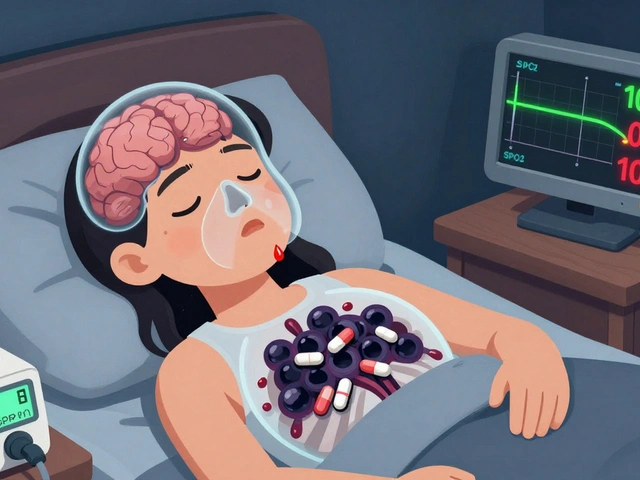


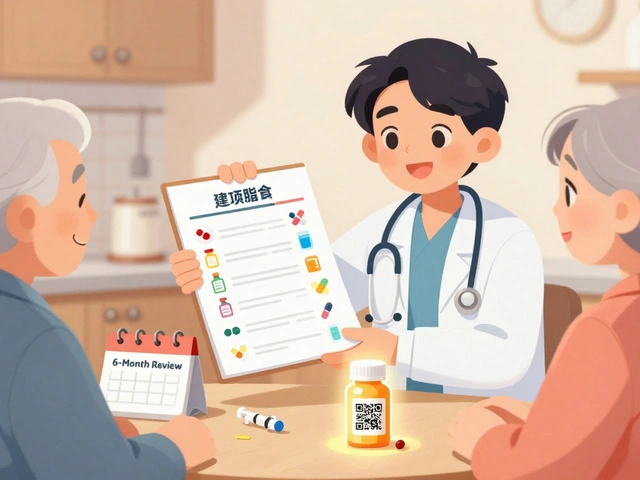
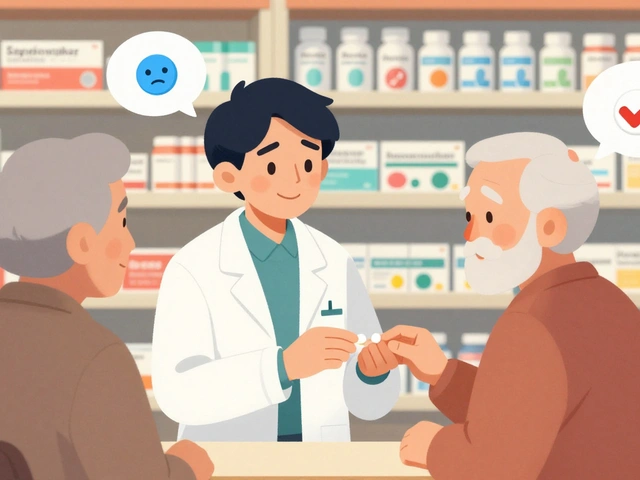

Write a comment